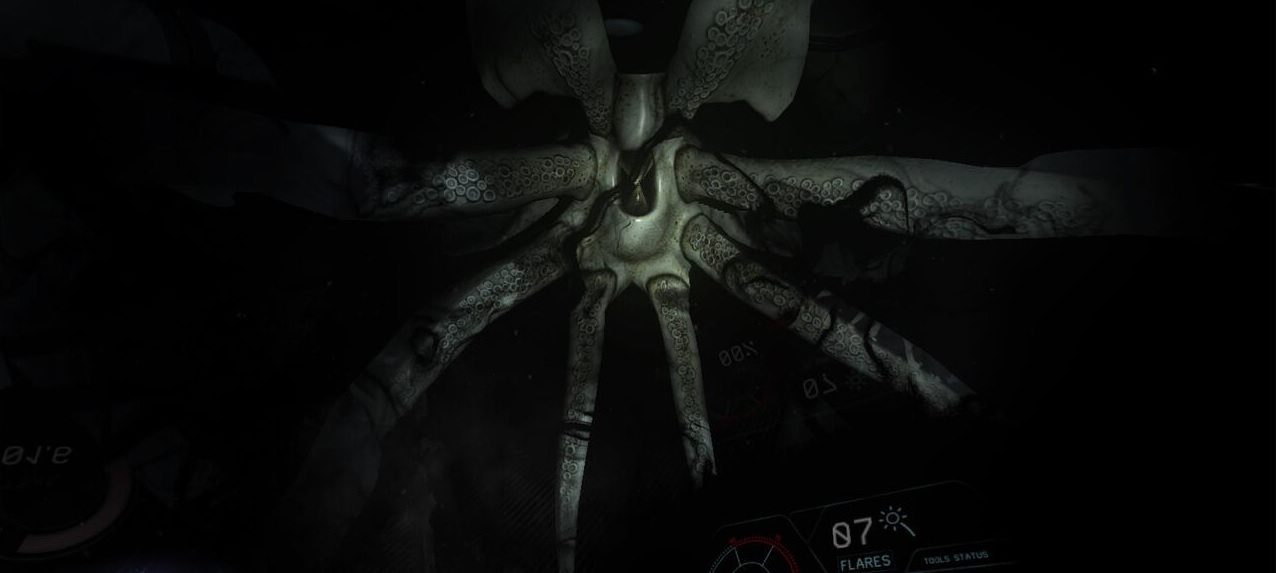Digital submersion is my one true fear
The ocean has never been particularly terrifying to me. Contemplating on a beach and staring at the blue sprawl fills me with a sense of calm, not horror. Snorkeling in a Hawaiian crater was one of the awe-inspiring moments of my life, despite the swath of creatures intermittently brushing like oiled fingers against my submerged skin.
Digital oceans are different. Though I know I’m in no physical danger, going deep beneath the waves in a game fills my stomach with anxiously slithering eels. Ecco the Dolphin traumatized me as a child. Super Mario 64‘s Jolly Roger Bay made me shut my Nintendo 64 off in fear. The relatively forgotten Treasures of the Deep forced me to summon my father into the room for support, where he laughed when upon realizing I had muted the volume to minimize the scarring stimuli.
Which is all to say: fuck the digital ocean.

Oculus Connect 2 was simultaneously exciting and nerve-wracking for me. Sure, I’d be able to step into worlds I could hardly fathom, but one of those worlds was the bottom of the gods-damned sea. Scrambling from a prior appointment to the event’s seventh floor, I came across the room that contained Honor Code’s Narcosis. Steven and Alessandro had both spent time with the demo at previous events, but it was my turn to explore the depths of his survival horror experience.
I knocked on the door, expecting someone named Lawrence (making the rookie mistake of confusing the PR person for the game developer). When an excitable, charismatic Frenchman named Quentin opened the door, I started to apologize and walk away, thinking I had intruded on someone’s private quarters. He assured me I was in the right place and led me to a computer, placing the Oculus Rift on my head and an Xbox One controller in my hands.
The Los Angeles fire-air threatened to break my immersion from the start, but I wanted to be afraid, and I tried to block out my surroundings as best as I could. Another developer from Honor Code, the measured and engaging David Chen, came in as I was adjusting to the controls. They both made sure I understood how to maneuver my diver and then respectfully remained quiet as I made my way through an aquatic facility.

Since you’re wearing a helmeted diving suit, the Rift feels thematically appropriate. Having this gadget on your head is less distracting and more of a natural extension. Being able to lean forward and see oxygen gauges just beneath your eyes helps you accept you’re really in this environment. I was peeking around corners as I approached them, sure that some ungodly being, whatever was responsible for the flooding of this base, was going to drag me even further into the depths.
My demo was largely similar to the one Alessandro saw, though I spent more time slowly wading through a cave infested with long-limbed crabs the size of cars. I launched flares at them, watching them flinch into the darkness. How I hated having to slowly approach them to sidle past them to progress. Wandering around the sea floor is what messed with me most, though. Looking up and having no ceiling (be it cement or stalactites) to protect me was all it took for the stomach-eels return. I could no longer just stare ahead and keep progressing; I was turning around to make sure nothing was chasing me every few steps.
Heat-induced sweat on my brow and the acute awareness that I was alone in a room with two men I didn’t know was enough to keep me from full immersion, but if I had been at home, I’m not sure how I’d fare. An hour of wandering through sea caves as murderous cuttlefish tried to latch onto my face might be enough to break me. Coupled with the “Narcosis Moments” that the developers mentioned (hallucinations stemming from oxygen deprivation), I might not survive long enough to write about this again.
But as much as digital submersion frightens me, finishing these games is my way of conquering this bizarre fear. I hope to play Narcosis when it releases next year for the entertainment, horror, and catharsis it could bring me.


